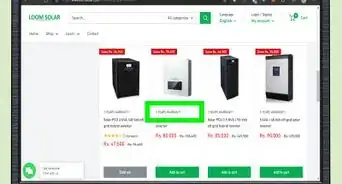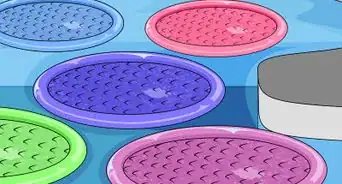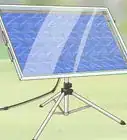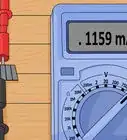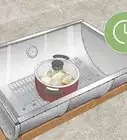This article was co-authored by Guy Gabay. Guy Gabay is a Solar Energy Contractor and the CEO of AmeriGreen Builders, a full-service solar energy, roofing, HVAC and window installation company based in the greater Los Angeles, California region. With over eight years of experience in the construction industry, Guy leads the AmeriGreen team focusing on bringing an educational approach to energy efficient home upgrades. Guy holds a B.S. in Marketing from California State University - Northridge.
This article has been viewed 89,099 times.
The best way to charge solar lights is with sunlight. However, even if you don’t have access to direct sunlight, you can still charge your solar lights in other ways. In overcast or winter weather, you can easily charge solar lights with indirect sunlight. What’s more, you can even charge your solar lights with no sunlight at all!
Steps
Charging with Indirect Sunlight
-
1Clean your solar panels when using them in cloudy weather. Sunlight will still reach your solar lights in cloudy weather, although not as much as in sunny weather. Cleaning any dust, dirt, or grime off the surface of the panels will thus help your solar lights charge more efficiently and make better use of limited sunlight.[1]
- Be very gentle when cleaning your solar panels. Use clean water and a microfiber cloth to scrub the dirt and grime off of your lights.
- Avoid using detergents to clean the solar panels; these may cause streaking that could actually make it harder for the panels to charge.
- If you're in an area that has a lot of dust, pollen, sandstorms, or fires, wash off the layers of dust, pollen, dander, or ashes with a hose.[2]
-
2Move the lights to be in the best position for receiving limited sunlight. Angle the solar panels to directly face the sun as it moves across the sky. This is especially important in winter, when there’s less sunlight available throughout the day.[3]
- This is a relatively labor-intensive method, since you’ll have to continually reposition the lights throughout the day. If you’re unable to do this, place the lights somewhere they’ll get the most sunlight throughout the day (e.g., the middle of a backyard).
- For best results, charge your solar lights for 8-10 hours in full sunlight.
- Be sure to place your solar lights so that they’re not blocked from receiving sunlight, as they would be, for example, under a tall tree.
- The best direction to face your lights so they're getting sunlight most of the day is South, followed by West, East, and North (in the Northern Hemisphere).[4]
Advertisement -
3Use mirrors to redirect sunlight to your lights, if needed. If the solar panels are positioned underneath a shadow, place a mirror nearby so that it reflects sunlight onto the panels. This isn’t a very efficient solution, though, so only resort to this if you can’t move the solar lights themselves into a better position.[5]
- Go with mirrors that are about twice the size of the solar panel. This will increase the chances of the panels receiving as much sunlight as possible.
- For best results, position the mirrors diagonally on the ground so that they’re in a fixed position and lay the solar panels alongside them. This way, you don’t have to suspend the mirrors somewhere above the solar panels.
- Note that this method also requires you to frequently reposition the mirror, since the sun moves pretty rapidly across the sky.
-
4Turn off the lights and let them charge more efficiently for 72 hours. Your solar lights will charge much more efficiently when they’re turned off. Be sure to leave them outside in a place where they’ll still receive as much sunlight as possible.[6]
- It’s recommended that you do this on a regular basis (e.g., once a month) in order to keep your solar lights working as effectively as possible.
- This technique is known as a “deep charge” in the solar lighting industry.
Using Artificial Lighting
-
1Charge your solar lights with light from an incandescent bulb. The light from most incandescent bulbs is usually able to charge a solar light, although not as effectively as natural sunlight. Place the solar panels directly underneath a household light to charge them as quickly as possible without sunlight.[7]
- Place your solar lights as close to the light bulb as possible. The further away it is from an incandescent light bulb, the longer it will take your solar panel to charge. Use a bulb with a high wattage to speed up the charging time.
- Note that this method is only worthwhile if you’re already using an incandescent bulb for lighting or some other purpose. It’s otherwise a very inefficient way of charging a solar panel.
- How quickly your solar lights will charge with this method depends on the specific model and lights that you’re using. For best results, charge your solar panels for at least 12 hours if you’re using incandescent lights.
-
2Use LED lights to charge a solar light when you’re far from home. Battery-operated LED lights, like LED flashlights, are also able to charge solar lights. This is the best way to charge solar lights when you don’t have access to indoor lighting, such as when you’re camping.[8]
- Charge your solar panels for at least 10-12 hours if you’re using an LED light to do so.
- Like using an incandescent bulb, this method is really only worthwhile if you’re already using an LED light for some other purpose.
-
3Avoid placing your solar lights near street lights or porch lights. When solar lights are exposed to high-intensity light in the evenings, their sensitivity will decrease over time. For best results, place your lights as far away from artificial light as possible when using them in the evenings.[9]
- Street lights, porch lights, and other types of automatic outdoor lighting are the most common causes of reduced solar light sensitivity over time.
- Note that this only applies to evenings when your lights are supposed to be running. It’s perfectly fine to expose your solar lights to artificial lighting when they’re turned off or charging.
Community Q&A
-
QuestionMy solar panel is not working well. When I turn on the switch, the light will take forever to turn on even though it's daylight. Can you advise how to fix it?
 wu waoCommunity AnswerThere are two possible reasons. One reason is the solar panel being broken. The other reason is the controller being board broken. If solar lights can still light for several days, it means the solar panel can still charge energy. Open the solar lights and replace the controller board.
wu waoCommunity AnswerThere are two possible reasons. One reason is the solar panel being broken. The other reason is the controller being board broken. If solar lights can still light for several days, it means the solar panel can still charge energy. Open the solar lights and replace the controller board. -
QuestionCan I charge the unit with electricity and the solar panel at the same time?
 Nathan Pemberton (PowerBee)Community AnswerThis can be quite dangerous to do, unless you are a qualified electrician. There are specific charges to charge certain devices but these are made specifically for those devices and they have a certain voltage amperage and polarity the voltage is normally transformed from 240 to a far lower voltage, so I would highly recommend not attempting this.
Nathan Pemberton (PowerBee)Community AnswerThis can be quite dangerous to do, unless you are a qualified electrician. There are specific charges to charge certain devices but these are made specifically for those devices and they have a certain voltage amperage and polarity the voltage is normally transformed from 240 to a far lower voltage, so I would highly recommend not attempting this.
References
- ↑ https://group.met.com/en/mind-the-fyouture/mindthefyouture/5-ways-to-make-sure-your-solar-panels-operate-at-their-optimum
- ↑ Guy Gabay. Solar Energy Contractor. Expert Interview. 4 August 2020.
- ↑ https://www.thesolarcentre.co.uk/blog/2016/11/09/solar-lights-work-winter-definitive-guide/
- ↑ Guy Gabay. Solar Energy Contractor. Expert Interview. 4 August 2020.
- ↑ https://www.thesolaradvantage.net/how-to-charge-solar-lights-without-the-sun/
- ↑ https://alternativeenergysourcesv.com/new-solar-lights-not-working/
- ↑ https://www.thesolaradvantage.net/how-to-charge-solar-lights-without-the-sun/
- ↑ https://www.thesolaradvantage.net/how-to-charge-solar-lights-without-the-sun/
- ↑ https://www.thesolaradvantage.net/how-to-charge-solar-lights-without-the-sun/
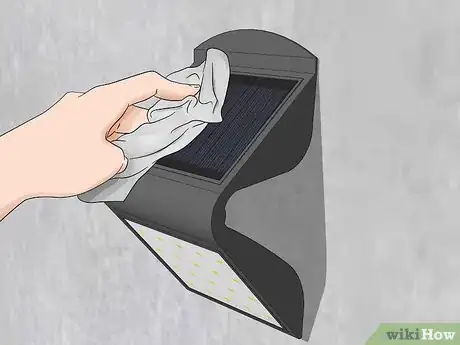




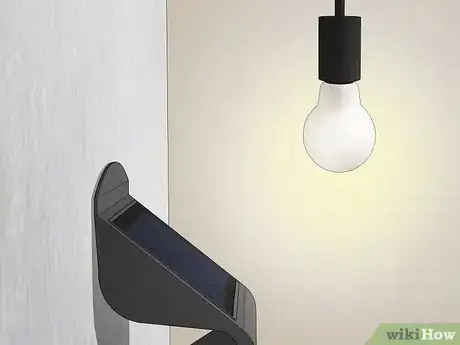
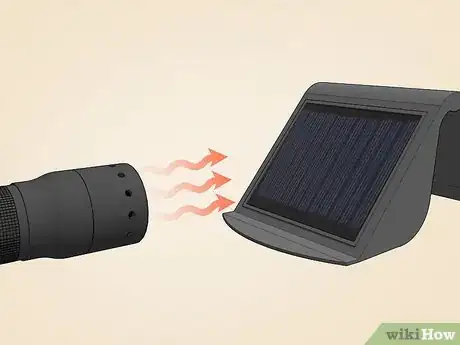
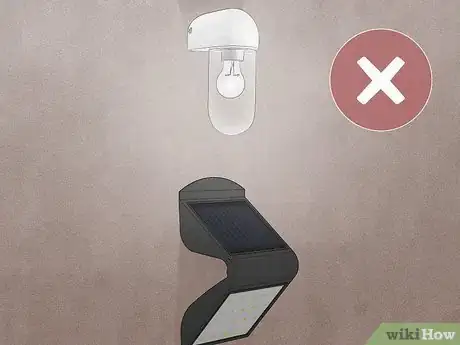

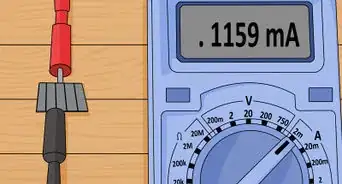
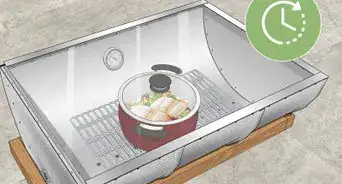
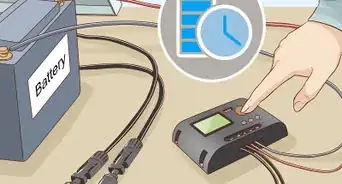
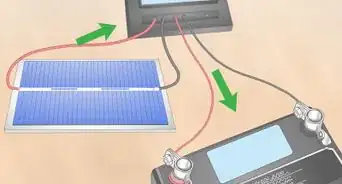
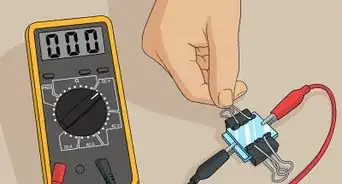
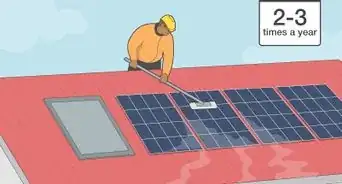

-Step-12-Version-2.webp)
-Power-Generator-Step-11-Version-2.webp)
